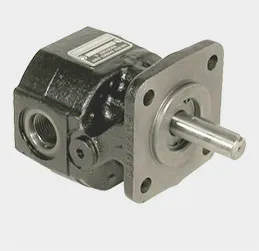copper stamping parts
The Versatility and Importance of Copper Stamping Parts
Copper stamping parts play a vital role in various industries, including electronics, automotive, aerospace, and telecommunications. This versatile manufacturing technique involves shaping and cutting copper sheets or coils into specific designs and sizes through the use of presses and dies. The attributes of copper, such as its excellent electrical conductivity, corrosion resistance, and malleability, make it an ideal choice for a wide range of applications.
What is Copper Stamping?
Copper stamping is a subtractive manufacturing process wherein metallic sheets are transformed into parts through punching, cutting, bending, and forming. The process begins with a sheet of copper, which is fed into a stamping machine equipped with custom-designed dies. As the machine operates, it applies force to the sheet, creating shaped parts that meet precise specifications.
The accuracy achievable through stamping is one of its significant advantages. High-volume production with consistent quality is possible, making copper stamping an ideal method for industries that require precision components. Whether for small-scale components or large batches, stamping ensures that each part adheres to design specifications, reducing the need for further machining or finishing.
Applications of Copper Stamping Parts
Copper stamping parts find extensive use in numerous applications. In the electronics sector, they are essential for manufacturing connectors, terminals, and other components crucial to circuit boards. The high electrical conductivity of copper ensures that these parts effectively conduct electricity, making them indispensable in modern electronic devices.
In the automotive industry, copper stamping parts are used in various components, including connectors, wiring harnesses, and sensor elements. As vehicles become increasingly reliant on complex electronic systems, the demand for reliable copper components grows. With the added benefits of weight reduction and heat dissipation, copper stamping parts contribute significantly to overall vehicle performance and safety.
The aerospace sector also benefits from copper stamping, utilizing these parts to produce components that withstand extreme temperatures and demanding conditions. The lightweight nature of stamped copper parts, combined with their strength and resistance to fatigue, makes them ideal for applications in aircraft systems and avionics.
copper stamping parts

Advantages of Copper Stamping Parts
1. Cost-Effectiveness Copper stamping is both a cost-effective and efficient manufacturing process. The capability to produce high volumes of parts at a relatively low cost makes it an attractive option for manufacturers seeking to optimize their production processes.
2. Precision and Consistency The use of automated stamping methods ensures that parts are produced with high accuracy. This consistency is crucial, especially in fields like electronics, where even slight variations can impact performance.
3. Versatility Copper stamping can be tailored to create a wide variety of shapes, sizes, and designs. This flexibility allows for the production of both simple and complex parts, meeting diverse industry needs.
4. Material Properties Copper possesses unique properties such as excellent thermal and electrical conductivity, high corrosion resistance, and antimicrobial characteristics. These make it an ideal material choice for applications requiring reliable performance over extended periods.
The Future of Copper Stamping Parts
As industries evolve and the demand for advanced technology increases, the future of copper stamping parts appears promising. Innovations in stamping technology, including the use of robotics and automation, are expected to enhance efficiency and precision further. Furthermore, as the push for sustainable practices strengthens, copper's recyclability and longevity present it as an environmentally friendly option.
In conclusion, copper stamping parts are an integral component of modern manufacturing across various sectors. The combination of copper's unique properties, the efficiency of the stamping process, and the growing demand for high-quality components positions copper stamping as a leading technology in the production of essential parts for electronics, automotive, aerospace, and beyond. As industries continue to innovate, the relevance of copper stamping will undoubtedly grow, leading to exciting developments in the field.
-
Crawler Drilling Rig - Baoding Hairun|Confined Space Drilling&Mine SafetyNewsAug.15,2025
-
Drill For Confined Spaces-Crawler Mounted Drill Rig | Crawler Drill Rig for SaleNewsAug.15,2025
-
Premium OEM Auto Parts & Stamping - Reliable ManufacturersNewsAug.15,2025
-
Crawler Drilling Rig for Confined Spaces-Baoding Hairun MachineryNewsAug.15,2025
-
Drill For Confined Spaces - Baoding Hairun Machinery And Equipment Trading Co., Ltd.NewsAug.15,2025
-
Advanced Crawler Drilling Rig - Baoding Hairun Machinery | Underground Mining SolutionsNewsAug.14,2025















